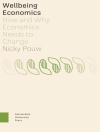Fully updated to reflect the most recent changes in the field, the Second Edition of Propensity Score Analysis provides an accessible, systematic review of the origins, history, and statistical foundations of propensity score analysis, illustrating how it can be used for solving evaluation and causal-inference problems. With a strong focus on practical applications, the authors explore various strategies for employing PSA, discuss the use of PSA with alternative types of data, and delineate the limitations of PSA under a variety of constraints. Unlike existing textbooks on program evaluation and causal inference, this book delves into statistical concepts, formulas, and models within the context of a robust and engaging focus on application.
Tabla de materias
List of Tables
List of Figures
Preface
About the Authors
Chapter 1: Introduction
Observational Studies
History and Development
Randomized Experiments
Why and When a Propensity Score Analysis Is Needed
Computing Software Packages
Plan of the Book
Chapter 2: Counterfactual Framework and Assumptions
Causality, Internal Validity, and Threats
Counterfactuals and the Neyman-Rubin Counterfactual Framework
The Ignorable Treatment Assignment Assumption
The Stable Unit Treatment Value Assumption
Methods for Estimating Treatment Effects
The Underlying Logic of Statistical Inference
Types of Treatment Effects
Treatment Effect Heterogeneity
Heckman’s Econometric Model of Causality
Conclusion
Chapter 3: Conventional Methods for Data Balancing
Why Is Data Balancing Necessary? A Heuristic Example
Three Methods for Data Balancing
Design of the Data Simulation
Results of the Data Simulation
Implications of the Data Simulation
Key Issues Regarding the Application of OLS Regression
Conclusion
Chapter 4: Sample Selection and Related Models
The Sample Selection Model
Treatment Effect Model
Overview of the Stata Programs and Main Features of treatreg
Examples
Conclusion
Chapter 5: Propensity Score Matching and Related Models
Overview
The Problem of Dimensionality and the Properties of Propensity Scores
Estimating Propensity Scores
Matching
Postmatching Analysis
Propensity Score Matching With Multilevel Data
Overview of the Stata and R Programs
Examples
Conclusion
Chapter 6: Propensity Score Subclassification
Overview
The Overlap Assumption and Methods to Address Its Violation
Structural Equation Modeling With Propensity Score Subclassification
The Stratification-Multilevel Method
Examples
Conclusion
Chapter 7: Propensity Score Weighting
Overview
Weighting Estimators
Examples
Conclusion
Chapter 8: Matching Estimators
Overview
Methods of Matching Estimators
Overview of the Stata Program nnmatch
Examples
Conclusion
Chapter 9: Propensity Score Analysis With Nonparametric Regression
Overview
Methods of Propensity Score Analysis With Nonparametric Regression
Overview of the Stata Programs psmatch2 and bootstrap
Examples
Conclusion
Chapter 10: Propensity Score Analysis of Categorical or Continuous Treatments
Overview
Modeling Doses With a Single Scalar Balancing Score Estimated by an Ordered Logistic Regression
Modeling Doses With Multiple Balancing Scores Estimated by a Multinomial Logit Model
The Generalized Propensity Score Estimator
Overview of the Stata gpscore Program
Examples
Conclusion
Chapter 11: Selection Bias and Sensitivity Analysis
Selection Bias: An Overview
A Monte Carlo Study Comparing Corrective Models
Rosenbaum’s Sensitivity Analysis
Overview of the Stata Program rbounds
Examples
Conclusion
Chapter 12: Concluding Remarks
Common Pitfalls in Observational Studies: A Checklist for Critical Review
Approximating Experiments With Propensity Score Approaches
Other Advances in Modeling Causality
Directions for Future Development
References
Index
Sobre el autor
Mark W. Fraser, Ph D, holds the Tate Distinguished Professorship at the School of Social Work, University of North Carolina where he serves as associate dean for research. He has won numerous awards for research and teaching, including the Aaron Rosen Award and the Distinguished Achievement Award from the Society for Social Work and Research. His work focuses on risk and resilience, child behavior, child and family services, and research methods. Dr. Fraser has published widely, and, in addition to Social Policy for Children and Families, is the co-author or editor of eight books. These include Families in Crisis, a study of intensive family-centered services, and Evaluating Family-Based Services, a text on methods for family research. In Risk and Resilience in Childhood, he and his colleagues describe resilience-based perspectives for child maltreatment, substance abuse, and other social problems. In Making Choices, Dr. Fraser and his co-authors outline a program to help children build sustaining social relationships. In The Context of Youth Violence, he explores violence from the perspective of resilience, risk, and protection, and in Intervention with Children and Adolescents, Dr. Fraser and his colleagues review advances in intervention knowledge for social and health problems. Intervention Research: Developing Social Programs describes the design and development of social programs. His most recent book is Propensity Score Analysis: Statistical Methods and Applications. Dr. Fraser serves as editor of the Journal of the Society for Social Work and Research. He is a fellow of the National Academies of Practice and the American Academy of Social Work and Social Welfare.












